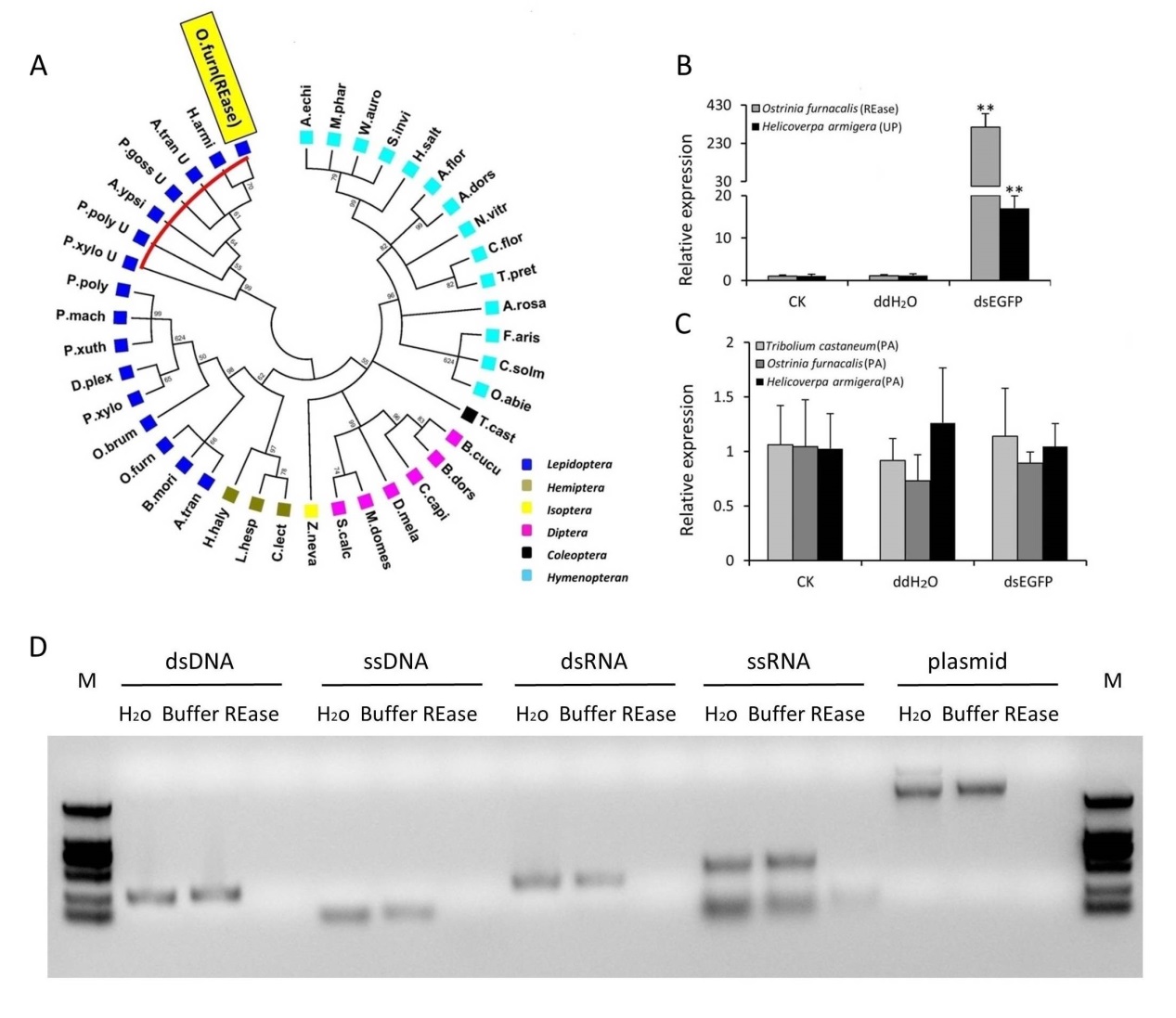A Lepidopteran Nuclease Suppresses RNAi
RNA interference (RNAi) refers to the double-stranded RNA (dsRNA)- or small interfering RNA (siRNA)-triggered post-transcriptional gene silencing that destroys mRNA of a particular gene to prevent its translation into an active gene product (most commonly a protein). The discovery of RNAi provides not only a technical breakthrough for functional genomics, but also opens a new avenue for protecting crops against insect pest damages. However, more than 70% of all agricultural pests are lepidopteran, which are less sensitive to RNAi. This phenomenon therefore hinders the wide application of RNAi technology in crop pest management.
Prof. Xuexia Miao and her colleagues at CAS Key Laboratory of Insect Developmental and Evolutionary Biology, CAS Center for Excellence in Molecular Plant Sciences/Shanghai Institute of Plant Physiology and Ecology (SIPPE), uncovered an lepidopteran-specific nuclease (an enzyme that cleaves the chains of nucleotides in nucleic acids into smaller units) that confers lepidopteran refractory to RNAi.
Using transcriptome analyses of the Asian corn borer (Ostrinia furnacalis), the research group has identified an lepidopteran-specific gene REase whose level is up-regulated in response to dsRNA treatment. The REase proteins prepared by the Bac-to-Bac baculovirus expression system could digest single-stranded RNA (ssRNA), dsRNA, and dsDNA both in vitro and in vivo. Down-regulation of REase in Asian corn borer led to increased amount and diversity of small RNAs and caused higher RNAi efficiency. Consistently, an opposite effect was observed when REase was overexpressed in fruit fly (Drosophila melanogaster). Therefore, these results indicate that REase is able to digest dsRNAs before they are processed into siRNA by Dicer-2, and thereby decreasing the efficacy of RNAi in lepidopteran and REase may represent a novel target for the improvement of RNAi for pest control in the future.
This study entitled “A nuclease specific to lepidopteran insects suppresses RNAi.” has been published online in Journal of Biological Chemistry on April 20, 2018.
The work was funded by the National Basic Research Program of China, the National Key R&D Program of China, the National Transgenic Great Subject from the Ministry of Agriculture of China, and the National Natural Science Foundation of China.

CONTACT:
Dr. Xuexia Miao, Professor
CAS Key Laboratory of Insect Developmental and Evolutionary Biology
CAS Center for Excellence in Molecular Plant Sciences/Shanghai Institute of Plant Physiology and Ecology (SIPPE)
Chinese Academy of Sciences
86-21-54924266
Email: xxm@sippe.ac.cn